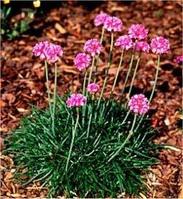A wildlife haven in the National Forest
 Woodland shelters, installed as part of the National Forest’s Visitor Infrastructure Project, will become wildlife havens thanks to an imaginative design incorporating a ‘living roof’. The designs for the shelters, released today, will not only provide innovative information points for visitors but will also create important undisturbed habitats for plants, birds and insects.
Woodland shelters, installed as part of the National Forest’s Visitor Infrastructure Project, will become wildlife havens thanks to an imaginative design incorporating a ‘living roof’. The designs for the shelters, released today, will not only provide innovative information points for visitors but will also create important undisturbed habitats for plants, birds and insects. The Visitor Infrastructure Project, funded by East Midlands Tourism (EMT), will help visitors find out just how much there is do across the 200 square mile Forest, and make the connections between one part of the Forest and another.
With EMT’s support, the National Forest Company is working with tourism businesses and Leicester-based award winning tourism designers, Haley Sharpe, to install the innovative information points for visitors. These range from the shelters, panels and benches, to listening posts and touchscreen kiosks.
The new shelters, which are manufactured locally using National Forest timber, will be erected at Sence Valley Forest Park, Beacon Hill Country Park, the National Forest Youth Hostel and Donington Park Service area off the M1/A42.
Craig Jones from Green Dreams which designs and plants the shelter roofs, said: “Roofs don’t have to be dull and dead. They cover a significant part of our country and with some effort and imagination, we could change these sterile surfaces into green oases.
“Living roofs can be important in the promotion of biodiversity and habitat, help to integrate a building into its surroundings and reduce water runoff from buildings.”
The plants suitable for living roofs are not necessarily those found in a traditional English garden, although many of those used may be native species and can help create habitats that will attract some interesting wildlife. They are made using shallow soils, which often dry out. This factor, combined with wind and frost exposure, creates a very harsh environment for plants. To cope with these conditions, any plant living here needs to be tough, hardy and drought tolerant.
Among the species to be used will be:
Sedum acre (biting stonecrop) – a widespread species throughout Europe. Very effective insect plant (adored by bees) with essential mat forming capabilities for living roofs.
Sedum album (white stonecrop) – provides flowers in June, good foliage colour change throughout the year.
Armeria maritima (thrift) – great for bees, wasps and beetles.
Leontodon autumnalis (hawkbit) – the long flowering season provides colour and nectar for a variety of insects, including bees and butterflies, especially late in the season.
Hypochaeris radicata (catsear) – fantastic plant for green roofs, excellent hoverfly attractant.
Lysimachia nummularia (creeping jenny) – great for a broad variety of insects with good area covering properties
Other sites that will feature new facilities as part of the wider Visitor Infrastructure Project include Conkers, Twycross Zoo, Ashby Tourist Information Centre, Ferrers Centre for Arts and Crafts, Snibston Discovery Park, Foremark, Staunton Harold and Thornton Reservoirs and Rosliston Forestry Centre. Information points will also be installed within key lay-bys on access routes into the Forest.
Sophie Churchill, Chief Executive of the National Forest Company said: “One of the beauties but also one of the challenges The National Forest faces is the fact that it spans a wide variety of landscapes including ancient Forest and new woodlands, wide river valleys and urban areas, rolling farmland and craggy outcrops with stunning views. Through the information points within this project, it will give visitors a sense of place to the whole destination, help to promote the wider area and link attractions within the Forest.”
The work across all venues is due to be completed by March 2008. In the meantime, visitors can find more information on the huge choice of things to do and see in the Forest or places to stay for a brilliant weekend break by logging onto the website Nationalforest.org.

